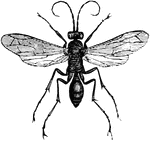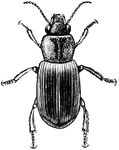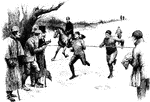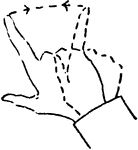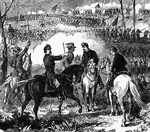
Battle of Pea Ridge
"Battle of Pea Ridge, Ark., fought March 6th, 7th and 8th, 1862, between the Federal forces, 13,000…

Battle of Pea Ridge
"Battle of Pea Ridge, Ark., fought March 6th, 7th and 8th, 1862, between the Federal forces, 13,000…
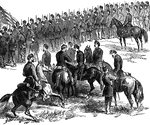
Battle of Malvern Hill
"Battle of Malvern Hill, near Turkey Bend, James River, Va., fought Tuesday, July 1st, 1862. The battle…

Battle of Malvern Hill
"Battle of Malvern Hill, near Turkey Bend, James River, Va., fought Tuesday, July 1st, 1862. The battle…
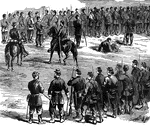
Battle of Malvern Hill
"Battle of Malvern Hill, near Turkey Bend, James River, Va., fought Tuesday, July 1st, 1862. The battle…

Battle of Malvern Hill
"Battle of Malvern Hill, near Turkey Bend, James River, Va., fought Tuesday, July 1st, 1862. The battle…
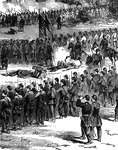
Battle of Malvern Hill
"Battle of Malvern Hill, near Turkey Bend, James River, Va., fought Tuesday, July 1st, 1862. The battle…
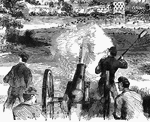
Battle at Dam No. 4
"Battle at Dam No. 4, Potomac River, between Butterfield's brigade and a large Confederate force. A…
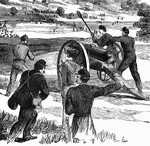
Battle at Dam No. 4
"Battle at Dam No. 4, Potomac River, between Butterfield's brigade and a large Confederate force. A…
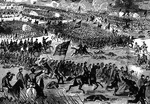
Battle of Champion Hills
"Battle of Champion Hills, May 16th, 1863- the formidable position of General Pemberton carried by Generals…
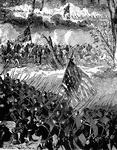
Battle of Champion Hills
"Battle of Champion Hills, May 16th, 1863- the formidable position of General Pemberton carried by Generals…
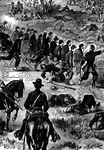
Battle of Champion Hills
"Battle of Champion Hills, May 16th, 1863- the formidable position of General Pemberton carried by Generals…

Myxine
"The body is long and eel-like, and the skeleton is reduced to a mere cartilaginous tube. It ours out…

Battle of Antietam
"Battle of Antietam, Burnside's Division, left wing- brilliant and decisive bayonet charge of Hawkins's…

Battle of Antietam
"Battle of Antietam, Burnside's Division, left wing- brilliant and decisive bayonet charge of Hawkins's…
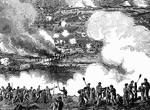
Battle of White Oak Swamp Bridge
"Battle of White Oak Swamp Bridge, Monday June 30th, 1862- Ayres's, Mott's and Randall's batteries checking…

Battle of White Oak Swamp Bridge
"Battle of White Oak Swamp Bridge, Monday June 30th, 1862- Ayres's, Mott's and Randall's batteries checking…
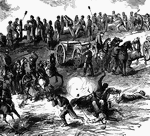
Battle of White Oak Swamp Bridge
"Battle of White Oak Swamp Bridge, Monday June 30th, 1862- Ayres's, Mott's and Randall's batteries checking…
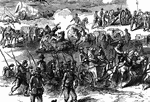
Battle of White Oak Swamp Bridge
"Battle of White Oak Swamp Bridge, Monday June 30th, 1862- Ayres's, Mott's and Randall's batteries checking…

Guilford Battle-ground
"View of the battle-ground. This view is from the eminence southwest of the site of old Guilford Court…
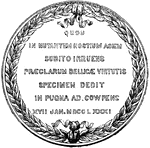
Howard Medal Back
"Silver medal awarded to Colonel Howard. The following are the device and inscriptions upon the back:…
Excerpt from the Rosetta Stone
"In 1799, the Rosetta Stone was found and gave the first key to the reading of hieroglyphics. On this…

Acarida
"An order of the class Arachinida, includes those insects, as the mites, ticks, itch-insects, etc.,…

Accidental Point
"That point in which a right line drawn from the eye parallel to another given right line cuts the picture…
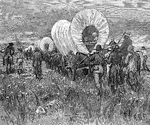
Western Train
"A western emigrant train. The occupation of the west. With every year the line of settlements was pushed…
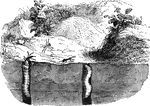
Tiger Beetle Larve
"The common European species, Cincindela campestris, may be found flying and running around…
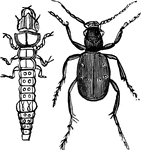
Tiger Beetle and Larvae
"The common European species, Cincindela campestris, may be found flying and running around…
Leodice antennata
"The Leodice antennata has the organs of locomotion attached to each segment; they are usually…
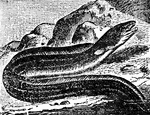
Conger Eel
"Conger is a large sea-eel, 5, 6, or, in rare cases, even 10 feet long. Its upper parts are brownish-white,…

Subangular Ground Beetle
"Subangular Ground-beetle (Aspidoglossa subangulata). Vertical line shows natural size."-Whitney, 1902
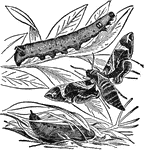
Hawk Moth
"Hawk Moth is a family of the lepidopterous insects, forming along with the clear winged moths and the…
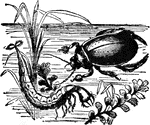
Water Beetle
"Water Beetles are beetles which live on or in the water. The Dytiscus, common in stagnant water, is…

Whiting
"The fish called the whiting is met with on all the coasts of Northern Europe, and is caught in great…
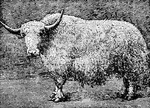
Yak
"Yak is a species of ox from the mountainous regions of Tibet. There are two races: the wild yak, generally…
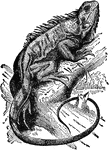
Iguana
"Iguana is a genus of saurian reptiles, natives of Brazil, Cayenne, the Bahamas, and neighboring localities…
Knots and Splices
"Knots and splices include all the various methods of tying, fastening, and joining ropes or cords.…

Knots and Splices
"Knots and splices include all the various methods of tying, fastening, and joining ropes or cords.…

Knots and Splices
"Knots and splices include all the various methods of tying, fastening, and joining ropes or cords.…
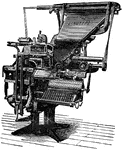
Linotype
"The Linotype is a machine, operated by finger keys, which automatically produces and assembles, ready…

Surface of a nail
"Concave or Adherent Surface of the Nail. A, border of the root; B, whitish portion…
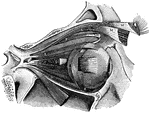
Muscles of the eyeball
"A, attachment of tendon connected with the four recti muscles; B, external rectus,…
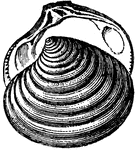
Astarte sulcata
"Astarte sulcata; In some systems of zoological classification, a family of dimyarian bi-valves, an…
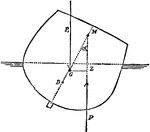
Metacenter
"The Metacenter is the point of intersection of the vertical line passing through the center of gravity…

Front view of the larynx
"Cartilages and Ligaments of the Larynx. (Front view.) A, hyoid bone; B, membrane…

Palmistry
"Palmistry, or Chiromancy, is the art which professes to discover the temperament and character of anyone,…
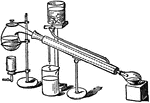
Retort
"A Retort is a vessel in whose chamber an object is subjected to distillation or decomposition by heat,…

Sand Lizard
"The Sand Lizard is a common European lizard, about seven inches long, of which the tail is four. Usual…
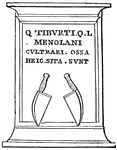
Culter
"A knife with only one edge, which formed a straight line. The blade was pointed, and its back curved.…
!["The Tapeworm is an intestinal worm, Tænia solium, in form somewhat resembling tape. Its length is from 5 to 15 yards, and its breadth from two lines at the narrowest part to four or five at the other or broader extremity. At the narrow end is the head, which is terminated anteriorly by a central rostellum, surrounded by a crown of small recurved hooks, and behind them four suctorial depressions; then follow an immense number of segments, each full of microscopic ova. The segments are capable of being detached when mature, and reproducing the parasite. There is no mouth; but nutrition appears to take place through the tissues of the animal, as algæ derive nourishment from the sea water in which they float. The digestive system consists of two tubes or lateral canals, extending from the anterior to the posterior end of the body, and a transverse canal at the summit of each joint. [Pictured] A single segment or proglottis magnified; 1, generating pore; 2, water vessels; 3, dendritic ovary."—(Charles Leonard-Stuart, 1911)](https://etc.usf.edu/clipart/16500/16595/tapeworm2_16595_mth.gif)
Tapeworm
"The Tapeworm is an intestinal worm, Tænia solium, in form somewhat resembling tape. Its length…
Retis
"A net. In hunting it was usual to extend nets in a curved line of considerable length, so as in part…

Eyes right
At the command right, turn the head to the right oblique, eyes fixed on the line of eyes of the men…
Order Arms Standing
"The butt rests evenly on the ground, barrel to the rear, toe of the butt on a line with toe of, and…
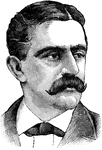
Charles Stebbins Fairchild
Fairchild was Attorney General of New York and U.S. Secretary of the Treasury. Fairchild also was president…
